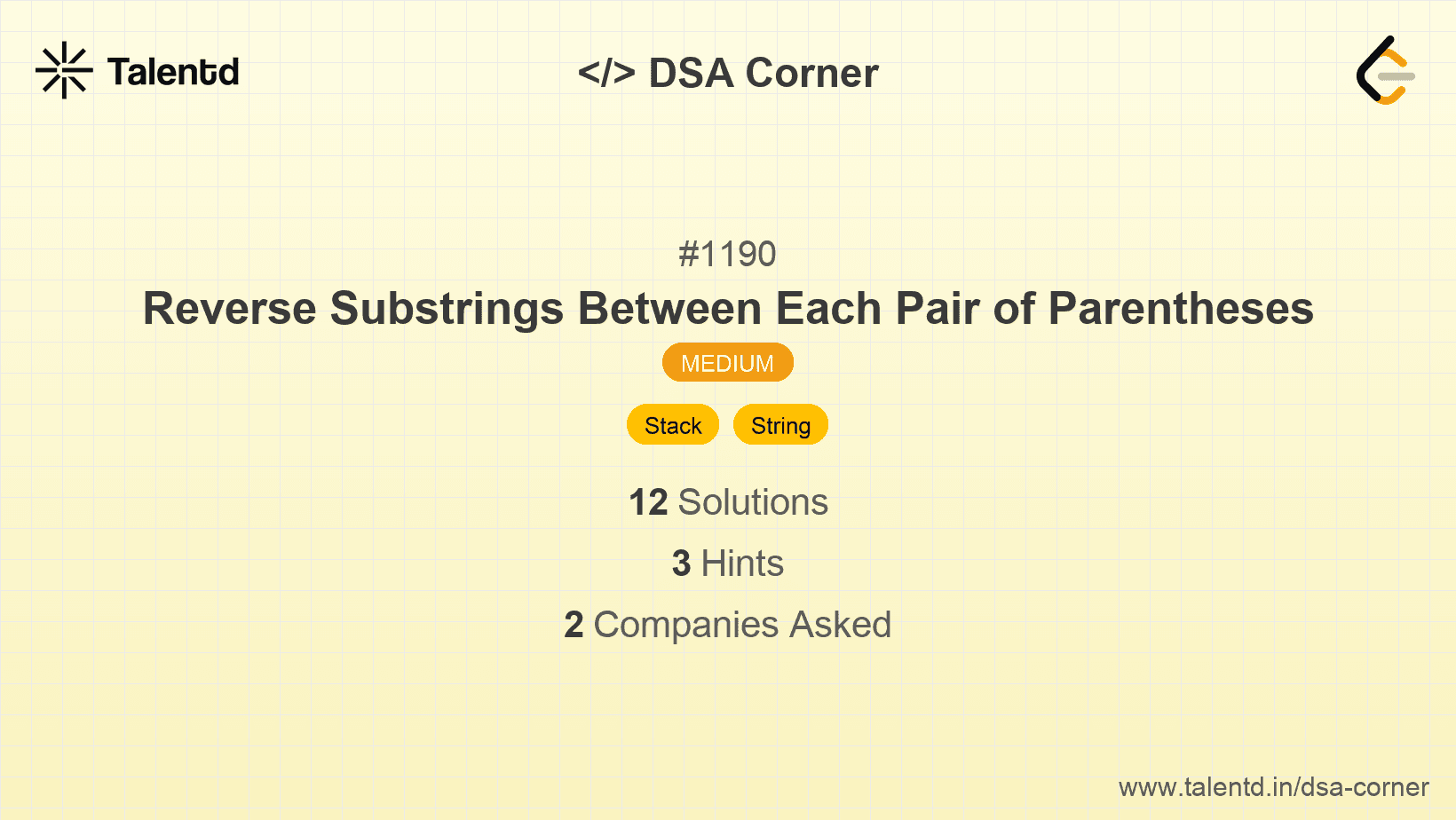
Sponsored
Sponsored
Utilize a stack to handle the nested or paired parentheses efficiently. By pushing characters onto a stack until a closing parenthesis is encountered, then reversing the needed substring, you can leverage the stack's LIFO properties to achieve the desired result.
Time Complexity: O(n).
Space Complexity: O(n) due to the stack usage for storing characters.
1def reverseParentheses(s):
2 stack = []
3 for char in s:
4 if char == ')':
5 queue = []
6 while stack and stack[-1] != '(':
7 queue.append(stack.pop())
8 stack.pop() # pop '('
9 stack.extend(queue)
10 else:
11 stack.append(char)
12 return ''.join(stack)
13
14
15s = '(u(love)i)'
16print(reverseParentheses(s))
17This Python implementation uses a list as a stack to reverse parts of the string contained between parentheses. By popping off characters and utilizing a temporary storage list, it reverses the sequence efficiently and appends it back onto the original processing stack.
This approach involves separately building the result string in a single pass using an auxiliary data structure to track position swaps. The use of local in-string reversals enables an efficient and clean traversal building mechanism.
Time Complexity: O(n).
Space Complexity: O(n), using additional space for parentheses pair tracking and intermediate char arrays.
The JavaScript solution handles paired parenthesis index tracking through an object for dynamic access and simplifies character sequencing by toggling traversal direction at each parenthesis boundary, offering control with minimal execution complexity.